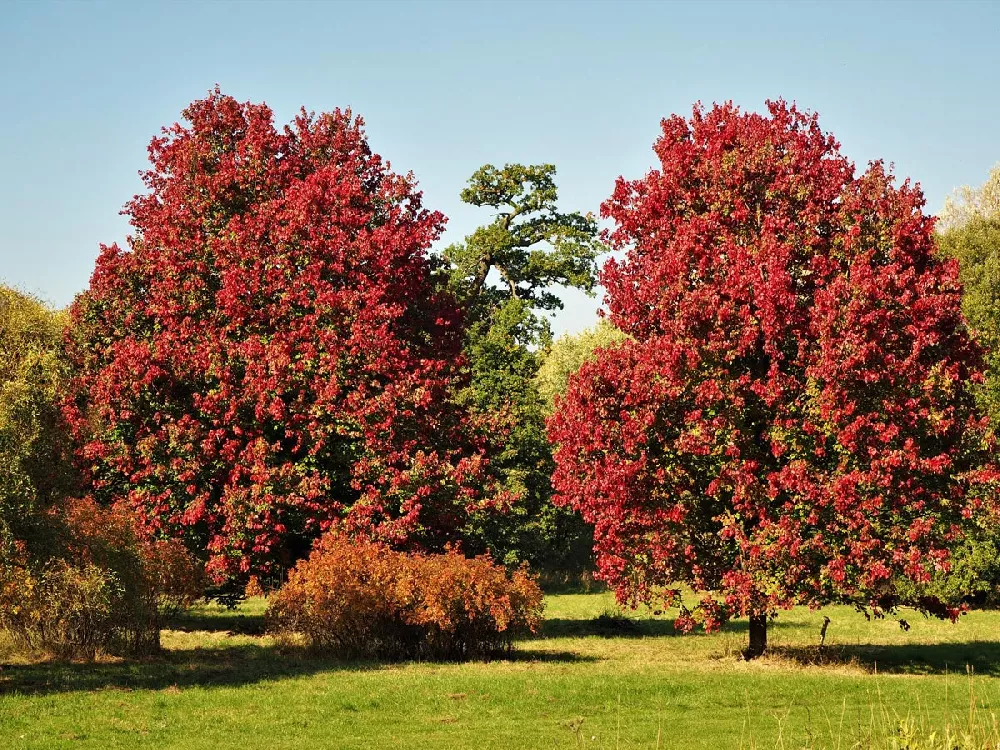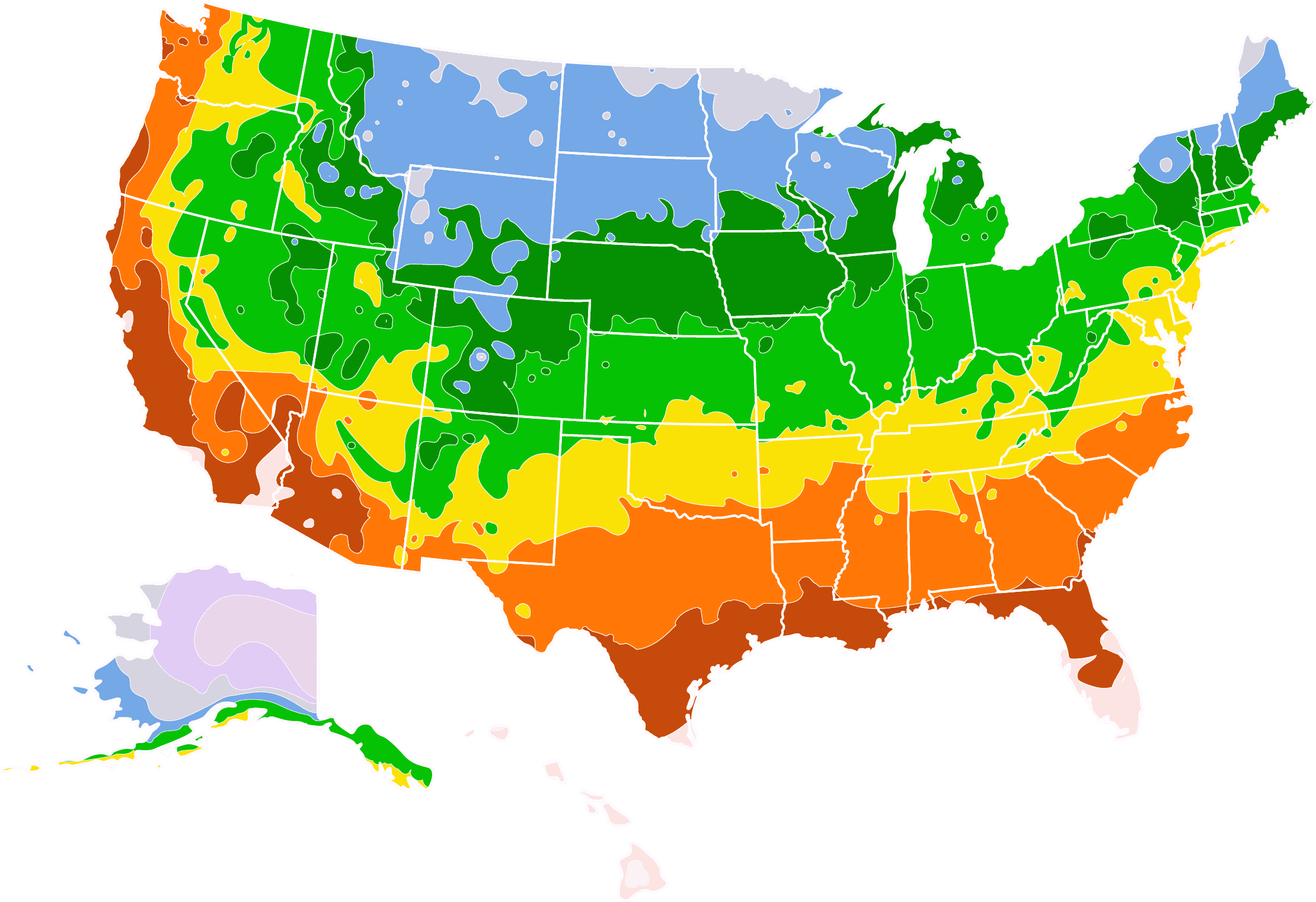- Home >
- Maple Trees >
- October Glory Red Maple Tree
October Glory Red Maple Tree for Sale - Buying & Growing Guide
- Ships in 1-2 days
- 1-Year Warranty Eligible
- Pots or accessories are not included unless specified in the product options.
Shipping Details:
Once your order is shipped, you’ll receive an email with a tracking number and estimated delivery date. Most orders ship immediately, but some items are seasonal and may only ship in spring or fall. These products are noted on the website.
The name tells you two things about the October Glory Red Maple Tree, Acer rubrum 'October Glory.’ First, it has a spectacular show of vivid orange-red leaves in fall. Second, the tree holds onto those leaves well into the fall, when other maples have long shed theirs. Another benefit: October Glory is hardy even in hot southern states, making it possible to achieve that glorious fall color in places like southern Texas, where maples do not often grow well. This tree has much to offer during other seasons, as well. It produces vibrant red flowers in the spring, followed by red seed pods. In winter, the smooth gray bark offers structural interest in the garden, making this truly a four-season tree. Here are a few more reasons to consider adding an October Glory Red Maple Tree, to your landscape:
- Makes an excellent shade tree with a dense, rounded canopy.
- Will grow equally well in a range of soil types.
- The seed pods attract many kinds of birds and wildlife.
Plant Care
Sunlight

Although it can handle partial shade, October Glory likes full sun — six or more hours of direct light a day.
Watering
October Glory does best when it receives 1.5 inches of water a week, either from rain or supplemental watering.
Fertilizing

Fertilize with a balanced, 10-10-10 formula that is designed for landscape trees and shrubs.
Planting and Care
Planting instructions
Choose a site with well-drained soil that receives at least six hours of sun a day. Avoid planting your October Glory Maple under overhead wires or cables. Unpot your sapling and tease out any encircling roots, which can girdle the tree and slowly kill it. Dig a hole that’s as deep as the root ball and two to three times as wide. Place the sapling in the hole, spreading out the roots and holding it upright and steady. Fill in around it with topsoil that’s been mixed with well-rotted compost or manure, tamping down as you go to eliminate air pockets. Water thoroughly. Apply a 2-3 inch layer of an organic mulch such as bark chips around the tree’s root zone to conserve moisture and hinder weed growth.
Watering and nutrients
October Glory needs about 1.5 inches of water a week. When newly planted, water it every few days, aiming the hose at the root zone until the water stops seeping into the soil. A mature tree won’t need as much supplemental watering, since it will have developed an extensive root zone by that time. Fertilize your tree during the growing season with a slow-release and balanced 10-10-10 formula, preferably designed for landscape trees and shrubs.
Pollination
Red Maples flower early in the spring, especially in the southern end of their range, and they are one of the earliest food sources for honeybees and other insects. Pollinated flowers lead to clusters of red seed pods sometimes called “helicopters,” which eventually fall to the ground and may be blown a distance from the tree by wind.
Pruning
October Glory Red Maple Tree doesn’t need a regular annual pruning; it should naturally achieve a pleasing rounded shape on its own. However, monitor your tree for dead, broken, or diseased branches, trimming them off whenever you see them by cutting back to the collar of the connecting branch. Avoid pruning in spring, when the tree has broken dormancy and its sap is running.
Pests, diseases, and animals
Aphids and scale insects are two of the more common pests found on Red Maples. They are best handled by releasing beneficial insects such as ladybugs or parasitic wasps, which feed on these pests. Leafroller caterpillars may also be drawn to Red Maples; infected branches should be cut out and disposed of carefully. Diseases of the Red Maple include bacterial leaf scorch — more common in drought conditions — and several fungal diseases, such as anthracnose, which can be treated with a copper fungicide.
Achieving maximum results
October Glory Red Maple is an obliging plant that grows well in a range of conditions and soil types. To have the best possible growth, ensure that your tree receives a minimum of six hours of sun a day. And although the plant isn’t picky about soil conditions, it will put forth its best efforts in soil that drains well, but also retains moisture. That may sound like an oxymoron, but soil that contains a high amount of organic matter stays moist without blocking the ability of water to pass through it. One way to add organic matter to your soil is to get in the habit of applying a layer of compost or well-rotted manure under the mulch layer each spring.
FAQs
How big will my October Glory Maple get?
Where does the October Glory Red Maple grow best?
October Glory can be grown in U.S. Department of Agriculture hardiness zones 4-9, and it's hardy down to -30 degrees Fahrenheit. Like most maples, it grows well throughout the northern part of the U.S. But its range is wider than most maples, and the tree will also do well in states that are not known for growing maples, such as Louisiana and Mississippi.
How is October Glory best used in a landscape?
The most obvious use is as a specimen tree in a highly-visible spot, so that it's possible to admire the spectacular fall colors of the leaves. With its broad canopy, the tree will need some space around it, unless you're underplanting it with shade-tolerant perennials or shrubs. It can also serve as an excellent shade tree next to a patio or deck, or with a picnic table under its spreading branches.
Compare Similar Products
You can't add more Product Name - Product size to the cart.
OK











